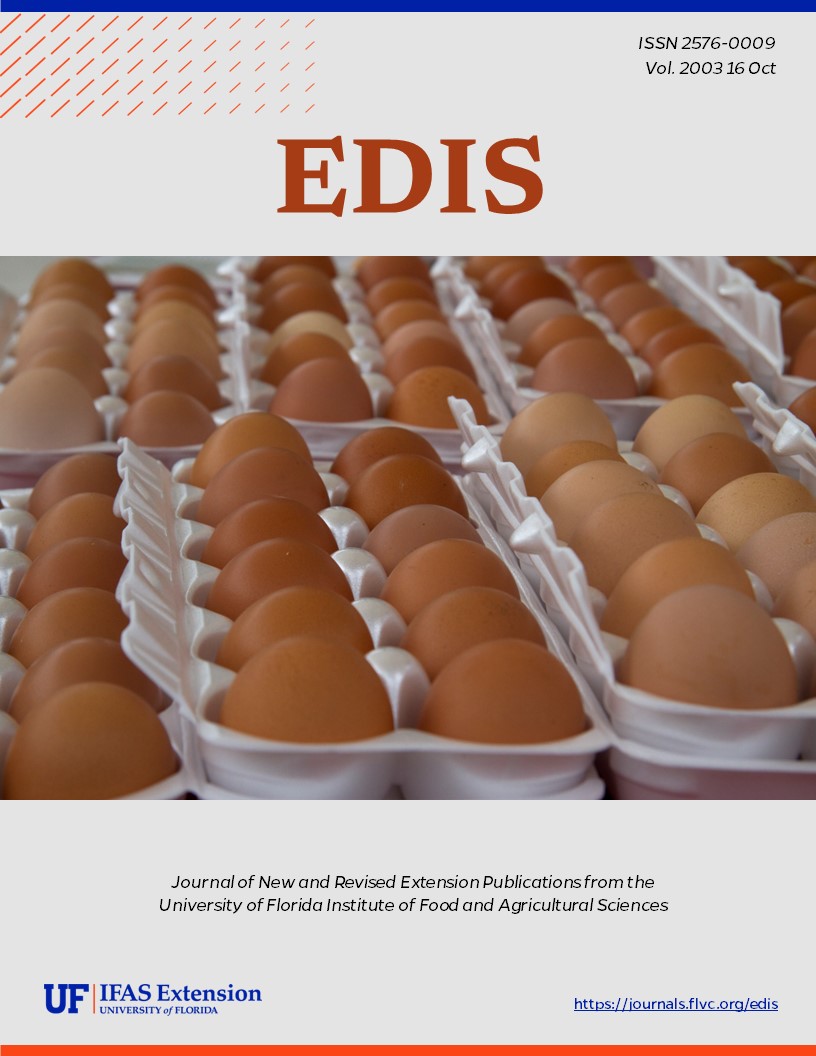Abstract
Testimony presented before the U.S. Senate Finance Committee by William A. Messina, Jr. on September 4, 2003. This is EDIS document FE438, a publication of the Department of Food and Resource Economics, Florida Cooperative Extension Service, UF/IFAS, University of Florida, Gainesville, FL. Published November 2003.
References
Adams, Chuck, Placido Sanchez Vega, and Anicia Garcia Alvarez. 2000. An overview of the Cuban commercial fishing industry and recent changes in management structure and objectives. Electronic Data Information Source (EDIS) FE218. Department of Food of Resource Economics, University of Florida, Gainesville, FL. http://edis.ifas.ufl.edu/FE218.
Adams, Chuck. 1998. The Cuban commercial fishing industry and implications to the Florida seafood industry of renewed trade. International Working Paper Number IWP-98-3. Department of Food and Resource Economics, University of Florida, Gainesville, FL.
Alvarez, Jose, and Lazaro Peña Castellanos. 2001. Cuba's sugar industry. Gainesville, FL: University of Florida Press.
Alvarez, Jose, and William A. Messina, Jr. 1993. Challenges and opportunities for Florida agriculture from future trade with Cuba: Preliminary findings and justification for further research. International Working Paper Number IWP-93-5. Department of Food and Resource Economics, University of Florida, Gainesville, FL.
Alvarez, Jose, and William A. Messina, Jr. 1992. Potential exports of Florida agricultural inputs to Cuba: Fertilizers, pesticides, animal feed and machinery. International Working Paper Number IWP-92-33. Department of Food and Resource Economics, University of Florida, Gainesville, FL.
Anuario Estadístico de Cuba. 2002. Oficina Nacional de Estadísticas. Ciudad de La Habana, Cuba.
Brown, Mark G. 2000. Potential impacts of Cuban citrus on Florida's citrus industry. Working Paper Series 2000-2. Florida Department of Citrus, Economic and Market Research Department, Lakeland, FL. http://www.cubanag.ifas.ufl.edu/pdf/brown1.pdf.
Citrus summary 2001-02. 2003. Florida Agricultural Statistics Service, Orlando, Florida. http://www.nass.usda.gov/fl/rtoc0ci.htm.
Country risk rankings. Euromoney Magazine, March 2003.
Fernandez Mayo, Maria Antonia, and James E. Ross. 2000. Cuba: Foreign agribusiness financing and investment. EIectronic Data Information Source (EDIS) FE161. Department of Food and Resource Economics, University of Florida, Gainesville, FL. http://edis.ifas.ufl.edu/pdffiles/FE/FE16100.pdf.
Messina, William A., Jr. 2000. Testimony before the U.S. International Trade Commission, Washington, D.C. (September 20).
Minneman, P.G. 1942. The agriculture of Cuba. U.S. Department of Agriculture (USDA), Washington, D.C.
Moseley, Anne E., Armando Nova González, Maria Antonia Fernandez Mayo, John VanSickle, Carlos E. Jauregui, and Douglas E. Smith. 1996. The vegetable and tropical fruit industries in Cuba and Florida. International Working Paper Number IWP-96-7. Department of Food and Resource Economics, University of Florida, Gainesville, FL.
Nova González , Armando, Thomas Spreen, and Carlos Jáuregui. 2001. The citrus industry in Cuba 1994-1999. International Working Paper Number IW01-4. Department of Food and Resource Economics, University of Florida, Gainesville, FL. http://www.cubanag.ifas.ufl.edu/pdf/cubacit.pdf.
Ross, James E., and Maria Antonia Fernandez Mayo. Forthcoming in 2003. Cuba's dollar food markets and U.S. Exports. In Cuba in transition, volume 13. Washington, D.C.: Association for the Study of the Cuban Economy.
Ross, James E., and Maria Antonia Fernandez Mayo. 2001. International economic associations in Cuba's agricultural sector. In Cuba in transition, volume 11. Washington, D.C.: Association for the Study of the Cuban Economy. http://lanic.utexas.edu/project/asce/pdfs/volume11/rossmayo.pdf.
Spadoni, Paolo. Forthcoming in 2003. The role of the United States in the Cuban economy. In Cuba in transition, volume 13. Washington, D.C.: Association for the Study of the Cuban Economy
Spadoni, Paolo. 2001. Impact of the Helms-Burton legislation on foreign investment in Cuba. In Cuba in transition, volume 11. Washington, D.C.: Association for the Study of the Cuban Economy. http://lanic.utexas.edu/project/asce/pdfs/volume11/spadoni.pdf.
U.S. Cuba Trade and Economic Council, Inc. 2003. Economic Eye on Cuba. Newsletter, the week of August 11 to August 17, New York, NY. http://www.cubatrade.org.
USDA, Economic Research Service. 2003. Foreign agricultural trade of the United States. http://www.ers.usda.gov/Data/FATUS.
U.S. Department of State. 2003. Cuba's foreign debt. Bureau of Western Hemisphere Affairs, Washington, D.C. (July 24). http://www.state.gov/p/wha/rls/fs/22743.htm.
VanSickle, John J., and William A. Messina, Jr. 1993. Cuba's vegetable industry. International Working Paper Number IW93-3. Department of Food and Resource Economics, University of Florida, Gainesville, FL.
Unless otherwise specified, articles published in the EDIS journal after January 1, 2024 are licensed under a Creative Commons Attribution-NonCommercial-NoDerivs 4.0 International (CC BY-NC-ND 4.0) license.

